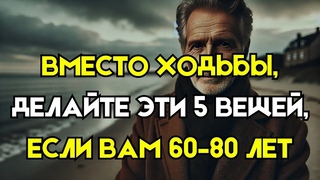Как научиться рисовать. Урок 1
Видеокурс “Основы живописи“
Моя группа в Telegram
Инстаграмм
Почта
Tsirin88@
Это первое видео из моего курса уроков для тех, кто хочет научиться рисовать.
Что бы нарисовать предмет и сделать его объемным нам надо передать его свето - теневой рисунок. И тут мы сразу касаемся такого понятия как “схемы света“. Верхний боковой свет - классический вариант освещения который отлично выявляет объем предмета. Прямой свет - заливает весь предмет полностью и не очень подходит для рисования так как делает предметы плоскими. Третья схема света - контражур , когда мы находимся напротив источника света.
Если вы первый раз работаете с краской то начните работу с тоновой растяжки от черного до белого цвета . Это очень полезное упражнение поможет вам почувствовать свойства краски и выстроить плавный переход от одного цвета к другому. Такой подход лежит в основе передачи объема на любом предмете.
В данном видео я работал масляными красками, но техника отлично подходит для акрила и гуаши.
Первый предмет который мы будем рисовать это - шар. Он легко строится, но сделать плавный переход от света к тени довольно сложно и требует определенного опыта. Вы сможете увидеть все этапы работы с моим комментарием а так же понять основы академического рисунка и живописи.
Видео полезно как для начинающих художников так для более опытных.
This is the first video from my course of lessons for those who want to learn how to draw.
To draw an object and make it three-dimensional, we need to transfer its light-shadow drawing. And here we immediately touch on such a concept as“light schemes“. The upper side light is a classic lighting option that perfectly reveals the volume of the object. Direct light-fills the entire object completely and is not very suitable for drawing as it makes the objects flat. The third scheme of light is a counter-image, when we are in front of the light source.
If you are working with paint for the first time, then start working with a tonal stretch from black to white. This very useful exercise will help you feel the properties of paint and build a smooth transition from one color to another. This approach is the basis for the transfer of volume on any subject.
In this video, I worked with oil paints, but the technique is great for acrylic and gouache.
The first object that we will draw is a ball. It is easy to build, but to make a smooth transition from light to shadow is quite difficult and requires some experience. You will be able to see all the stages of work with my comment and also understand the basics of academic drawing and painting.
The video is useful for both novice artists and more experienced ones.
Este es el primer video de mi curso de lecciones para aquellos que quieren aprender a dibujar.
Para dibujar un objeto y hacerlo volumétrico, debemos transmitirlo con un dibujo de sombra de luz. Y aquí tocamos inmediatamente tal cosa como“circuitos de luz“. La luz lateral superior es una opción de iluminación clásica que resalta perfectamente el volumen del objeto. Luz directa: llena todo el objeto por completo y no es muy adecuado para dibujar ya que hace que los objetos sean planos. El tercer Esquema de luz es el contragolpe cuando estamos frente a la fuente de luz.
Si es la primera vez que trabaja con pintura, comience con un estiramiento de tono de negro a blanco . Este ejercicio muy útil le ayudará a sentir las propiedades de la pintura y construir una transición suave de un color a otro. Este enfoque subyace a la transferencia de volumen en cualquier tema.
En este video trabajé con pinturas al óleo, pero la técnica es excelente para acrílico y gouache.
La primera cosa que vamos a dibujar es una bola. Es fácil de construir, pero hacer una transición suave de luz a sombra es bastante difícil y requiere cierta experiencia. Usted será capaz de ver todas las etapas del trabajo con mi comentario, así como entender los fundamentos del dibujo académico y la pintura.
El video es útil tanto para los artistas principiantes como para los más experimentados.























